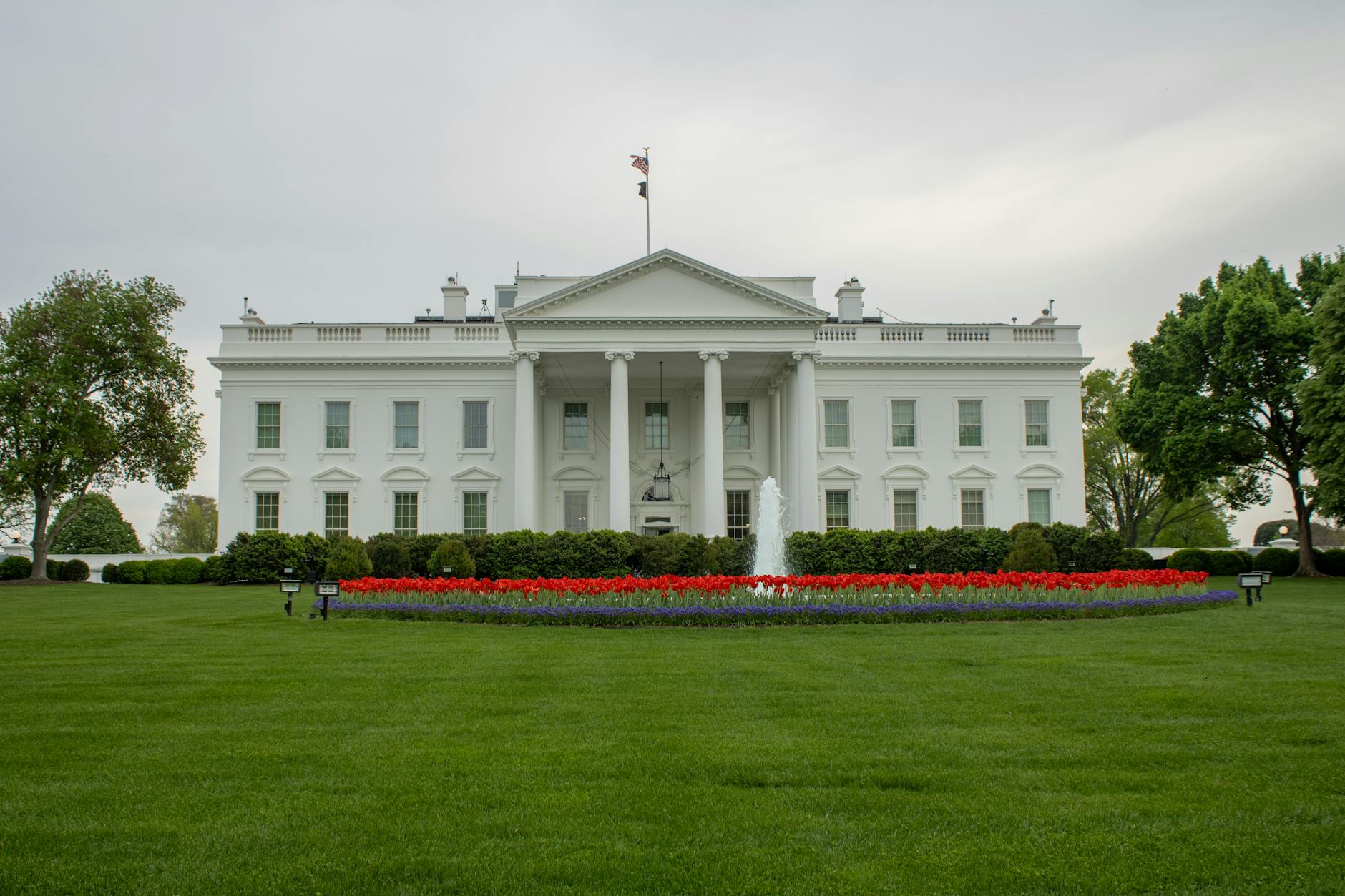Presidential Authority and Election Integrity: Examining the Push for Executive Action
Debate Intensifies Over Executive Orders on Voting, Amidst Constitutional Concerns and State Sovereignty
The integrity of the electoral process is a cornerstone of democratic governance, and discussions surrounding its protection often involve a spectrum of proposed solutions. Recently, former President Donald Trump has publicly stated his intent to explore the use of executive orders concerning federal elections, including potential actions related to mail-in voting and voting machines. This assertion has ignited a robust debate among legal scholars, election officials, and the public regarding the scope of presidential authority, the balance of power between federal and state governments in election administration, and the practical implications of such executive actions on the upcoming electoral landscape.
The prospect of executive action on federal elections raises fundamental questions about the constitutional framework that governs the United States. While the President holds significant executive powers, the U.S. Constitution, in Article I, Section 4, explicitly grants states the primary authority to “make or alter such Regulations” for the times, places, and manner of holding elections for Senators and Representatives. This “Elections Clause” has historically been interpreted to give states considerable latitude in managing their electoral processes, subject to the ability of Congress to alter such regulations at any time.
The specific provisions alluded to by former President Trump, such as potentially banning mail-in voting or enacting regulations concerning voting machines, have drawn particular attention from legal experts. Many view these potential measures as running counter to established legal precedent and the nuanced division of powers outlined in the Constitution. Understanding the historical context of election administration in the U.S., the evolution of voting methods, and the legal interpretations of presidential powers is crucial to a comprehensive analysis of this developing situation.
Context & Background
The administration of federal elections in the United States is a complex mosaic, with responsibilities shared and often contested between the federal government and individual states. The U.S. Constitution, particularly Article I, Section 4, establishes the foundational principle: “The Times, Places and Manner of holding Elections for Senators and Representatives, shall be prescribed in each State by the Legislature thereof; but the Congress may at any time by making or altering such Regulations, except as to the Places of chusing Senators.” This clause places the primary responsibility for administering elections squarely with the states, while reserving a supervisory and amendatory power for Congress.
Over the years, federal involvement in elections has grown, often through congressional legislation aimed at ensuring broader access, protecting civil rights, and establishing minimum standards. Landmark legislation such as the Voting Rights Act of 1965 (VRA) has been instrumental in combating discriminatory voting practices, demonstrating a federal role in safeguarding the franchise. The VRA, signed into law by President Lyndon B. Johnson, aimed to overcome legal barriers at the state and local levels that prevented African Americans from exercising their right to vote, as guaranteed under the 15th Amendment.
The concept of mail-in voting, or absentee voting, has a long history in American elections, evolving from provisions for military personnel serving abroad to broader accessibility measures. Concerns about the security and integrity of mail-in voting have often surfaced during election cycles, particularly in recent years. For instance, the COVID-19 pandemic in 2020 led to a significant expansion of mail-in voting options in many states as a public health measure. This expansion, however, also coincided with increased scrutiny and challenges to the process, fueled by political rhetoric and partisan disputes.
Similarly, voting machines and election technology have been a continuous area of focus. From punch card ballots to modern optical scanners and direct-recording electronic (DRE) machines, the evolution of voting technology has been driven by desires for accuracy, efficiency, and accessibility. However, advancements in technology also introduce new challenges, including concerns about cybersecurity, potential for manipulation, and the need for transparency and public confidence. The Help America Vote Act of 2002 (HAVA), enacted in response to issues that arose in the 2000 presidential election, provided federal funding to states to upgrade their voting systems, replace punch card and lever machines, and establish voter registration databases.
The legal basis for presidential executive orders generally stems from powers enumerated in Article II of the Constitution, which grants the President the authority to “take Care that the Laws be faithfully executed” and to act as Commander-in-Chief of the armed forces. Executive orders have been used to direct the operations of the executive branch, implement policy, and, in some instances, to address matters of national importance. However, the extent to which these powers can be used to override or dictate state-level election administration is a subject of significant legal contention.
In-Depth Analysis
The assertion by former President Trump regarding the potential use of executive orders on federal elections, specifically targeting mail-in voting and voting machines, prompts a deep dive into the constitutional boundaries of presidential power and state sovereignty in election administration. The core of this discussion lies in the interpretation of Article I, Section 4 of the U.S. Constitution, often referred to as the Elections Clause.
As previously noted, the Elections Clause clearly states that states, through their legislatures, prescribe the “Times, Places and Manner of holding Elections for Senators and Representatives.” This grants states significant autonomy. However, the clause also includes a crucial proviso: “but the Congress may at any time by making or altering such Regulations.” This empowers Congress to set federal standards and override state laws if it chooses to do so. The question then becomes whether a President, acting unilaterally through an executive order, can effectively perform the role reserved for Congress in altering these state-level regulations.
Legal scholars are divided on this matter. One perspective argues that an executive order cannot directly dictate or prohibit state-administered election procedures because such authority is constitutionally vested in state legislatures, with a potential override reserved for Congress. In this view, an executive order attempting to ban mail-in voting nationwide or mandate specific voting machine standards would likely be seen as an overreach of executive power, infringing upon state sovereignty and the clear mandate of the Elections Clause. Such an action could face immediate legal challenges, potentially reaching the Supreme Court.
Another viewpoint suggests that the President might be able to issue executive orders related to elections under broader executive powers, such as ensuring the integrity of federal elections or protecting national security, provided these actions do not directly contradict existing federal law or the Constitution. However, even under this interpretation, the scope would be limited. For example, an executive order might direct federal agencies to provide resources or guidance on election security, or to investigate alleged irregularities. It is far less likely that such an order could constitutionally ban established voting methods or mandate specific technological requirements that fall under state purview.
The specific claims regarding mail-in voting and voting machines are particularly contentious. Mail-in voting, while subject to ongoing debate about security measures, is a legal and established method of voting in many states, governed by state-specific laws. An executive order seeking to ban it outright would likely be challenged as exceeding presidential authority and interfering with state-enacted laws and procedures. Similarly, voting machines are often procured and managed by local and state election officials, adhering to state regulations and federal standards like those established by HAVA. Mandating specific types of machines or prohibiting others via executive order would bypass established procurement processes and state-level decision-making.
The source material itself highlights this concern, noting that “the provisions mentioned by the president, such as banning mail-in voting and voting machines, are viewed by many experts as plainly unconstitutional.” This sentiment reflects a widespread legal consensus that direct federal mandates on the mechanics of state elections, when not enacted by Congress, are constitutionally problematic.
Furthermore, any executive action would need to consider existing federal legislation. For instance, federal laws govern campaign finance, voter registration, and the accessibility of voting for individuals with disabilities. An executive order on elections would have to operate within this existing legal framework, not in opposition to it.
The practical implementation of such executive orders would also be a significant hurdle. States have developed diverse systems for managing elections, and a top-down federal mandate could create widespread confusion and disruption. Election officials across the country rely on established state laws and procedures, and a sudden federal directive could invalidate existing practices, potentially leading to disenfranchisement or widespread logistical challenges.
The history of federal election regulation shows a pattern of congressional action, often spurred by specific events or systemic concerns, rather than unilateral presidential directives that fundamentally alter state-administered processes. For example, the creation of the Cybersecurity and Infrastructure Security Agency (CISA) within the Department of Homeland Security was a congressional initiative aimed at improving election security by providing resources and guidance to state and local election officials. CISA’s role, as defined by Congress, is advisory and supportive, not regulatory in the sense of dictating election methods.
In essence, while the President has a vested interest in the integrity of federal elections, the constitutional architecture of the U.S. system assigns the primary operational control to the states, with Congress holding the power to standardize or override. An executive order that seeks to fundamentally alter the “Times, Places and Manner” of elections, as defined by state legislatures, ventures into constitutionally precarious territory and would likely face robust legal opposition.
Pros and Cons
The idea of executive action on federal elections, as proposed, presents a complex set of potential benefits and drawbacks, each carrying significant weight in the discourse on election integrity and governance.
Potential Pros:
- Swift Action on Perceived Threats: Proponents might argue that executive orders allow for rapid response to perceived threats to election integrity, potentially bypassing the often-slow legislative process. This could be appealing in situations where there is a belief that immediate federal intervention is necessary to safeguard electoral processes.
- Standardization and Uniformity: An executive order could, in theory, introduce a degree of uniformity in election procedures across different states, addressing concerns about inconsistencies that may arise from varying state-level regulations. This could be aimed at simplifying the process or ensuring a baseline level of security or accessibility nationwide.
- Federal Oversight and Enforcement: Supporters might contend that executive actions could bolster federal oversight of elections, ensuring that federal laws related to voting rights and election security are more rigorously enforced and that states comply with national standards.
- Addressing Specific Concerns: If certain voting methods or technologies are identified as posing significant, widespread security risks, an executive order could be seen as a tool to address these specific vulnerabilities on a national scale.
Potential Cons:
- Constitutional Overreach and State Sovereignty: The most significant concern is that such executive orders would infringe upon the constitutional authority of states to manage their own elections, as outlined in Article I, Section 4 of the U.S. Constitution. This could lead to protracted legal battles and undermine the federalist structure of governance.
- Legal Challenges and Uncertainty: Executive orders concerning election administration are highly likely to face immediate and substantial legal challenges. The ensuing litigation could create significant uncertainty and confusion for election officials and voters leading up to elections.
- Undermining Public Confidence: Attempts to unilaterally alter election procedures through executive orders, especially if perceived as partisan, could further erode public trust in the electoral process and deepen political polarization.
- Practical Implementation Difficulties: States have diverse election systems, infrastructure, and existing laws. A sweeping executive order could be practically difficult to implement uniformly, potentially leading to chaos, disenfranchisement, or unintended consequences.
- Ignoring Nuance and Local Needs: Election administration involves numerous local nuances and specific needs that vary from state to state and even county to county. Executive orders may not adequately account for this diversity, leading to policies that are ill-suited for particular jurisdictions.
- Bypassing Congressional Authority: The Constitution reserves the power to alter election regulations for Congress. Executive orders that attempt to do this directly could be seen as an end-run around the legislative branch, potentially setting a dangerous precedent for executive power.
- Potential for Partisan Weaponization: The use of executive orders to impose specific election rules could be perceived as partisan manipulation, further politicizing the administration of elections and alienating voters who disagree with the directives.
Key Takeaways
- The U.S. Constitution, specifically Article I, Section 4 (the Elections Clause), grants states primary authority over the “Times, Places and Manner” of federal elections, while reserving the power for Congress to alter these regulations.
- Former President Trump has indicated an intention to explore executive orders concerning federal elections, including potential actions on mail-in voting and voting machines.
- Many legal experts view provisions like banning mail-in voting or mandating specific voting machine standards via executive order as likely unconstitutional due to their infringement on state sovereignty and the established division of powers.
- Executive orders typically stem from presidential powers to manage the executive branch and faithfully execute laws. Their application to dictating state election procedures is legally contentious and untested in practice for such broad mandates.
- Historically, federal intervention in election administration has primarily occurred through congressional legislation, such as the Voting Rights Act of 1965 and the Help America Vote Act of 2002, rather than unilateral executive directives on core procedures.
- Mail-in voting is a long-standing, albeit sometimes debated, method of voting in the U.S., with its administration governed by individual state laws.
- Voting machine technology and security are areas of ongoing federal interest, with agencies like CISA providing guidance and resources, but direct federal mandates on machine types via executive order would be a significant departure from current practice.
- Potential pros of executive action could include swiftness and perceived standardization, while significant cons involve constitutional overreach, legal challenges, practical implementation difficulties, and the potential to undermine public confidence.
Future Outlook
The prospect of executive action on federal election matters remains a significant point of discussion, with potential implications for future electoral cycles. Should any such executive orders be issued, the immediate future would likely be characterized by intense legal scrutiny and public debate.
The legal landscape concerning presidential authority in election administration is complex and has been shaped by numerous court decisions over decades. Any executive order that attempts to broadly mandate or prohibit election procedures at the state level would almost certainly face immediate legal challenges. These challenges would likely argue that such actions exceed the President’s constitutional authority and violate the principle of federalism enshrined in the U.S. Constitution. The outcome of these legal battles could set significant precedents for the balance of power between the federal government and the states in overseeing elections.
Furthermore, the practical implementation of any executive directive would be a major consideration. States have varied election laws, administrative infrastructures, and technological systems. A federal mandate that does not account for this diversity could lead to confusion, logistical nightmares, and potentially disenfranchise voters if not implemented correctly and with sufficient lead time. Election officials at the state and local levels would need clear, actionable guidance that aligns with constitutional principles and existing legal frameworks.
The political ramifications are also substantial. The debate over election integrity is already highly charged. Executive actions that are perceived as partisan could further deepen divisions and erode public trust in the electoral system. This could lead to increased polarization and a more contentious political environment.
Looking ahead, it is also possible that the focus on executive action may prompt further legislative discussions at the federal level. Congress has the power to establish national standards for elections, and ongoing debates about election integrity could lead to proposals for new federal legislation. Such legislation, if passed, would provide a clearer, constitutionally grounded framework for federal involvement in elections, potentially preempting the need for or challenging the legitimacy of executive directives on these matters.
The role of technological advancements in voting, such as voting machines and cybersecurity measures, will continue to be a focal point. Federal agencies like CISA are expected to play a role in providing guidance and resources to states to enhance election security. However, the debate over the appropriate level of federal regulation versus state autonomy in these areas is likely to persist.
Ultimately, the future of federal involvement in election administration will be shaped by ongoing legal interpretations, political dynamics, and the continuous efforts to balance national standards with state-level flexibility and innovation. The emphasis will likely remain on ensuring secure, accessible, and trustworthy elections that uphold democratic principles.
Call to Action
In an era where the integrity and administration of elections are subjects of intense public and political scrutiny, informed engagement is paramount. Citizens concerned about the future of electoral processes are encouraged to:
- Educate Themselves on Constitutional Frameworks: Understanding the roles and responsibilities of federal and state governments in election administration is crucial. Familiarize yourself with Article I, Section 4 of the U.S. Constitution and the historical context of federal election laws. Resources like those from the National Archives and Records Administration (U.S. Constitution) can provide foundational knowledge.
- Follow Reliable News Sources and Expert Analysis: Stay informed by consulting reputable journalistic outlets and academic experts who analyze election law and policy. Look for balanced reporting that presents multiple perspectives and avoids sensationalism. Organizations like the Brennan Center for Justice offer in-depth analysis of election-related issues.
- Engage with Elected Officials: Communicate your views and concerns to your federal and state representatives. Understanding their positions and advocating for policies that promote secure and accessible elections is a vital part of democratic participation.
- Support Non-Partisan Election Integrity Organizations: Many non-profit organizations are dedicated to promoting fair and accurate elections. Supporting these groups through volunteering or donations can help bolster efforts to safeguard the democratic process. Examples include organizations that focus on voter education, election observation, and advocating for election reforms.
- Participate in Local Election Administration: Consider becoming a poll worker or participating in local election board meetings. Direct involvement offers firsthand insight into election processes and can help identify areas for improvement within existing frameworks. Information on becoming a poll worker can often be found on your state or local election authority’s website.
- Advocate for Transparency and Security Measures: Support initiatives that enhance the transparency and security of voting systems, from voter registration databases to the tabulation of ballots. Understanding the technologies used, such as voting machines, and the security protocols in place is essential. Resources from the Cybersecurity and Infrastructure Security Agency (CISA) offer valuable information on election security best practices.
By actively engaging with these principles and actions, citizens can contribute to a more informed, robust, and trustworthy electoral system for all.









